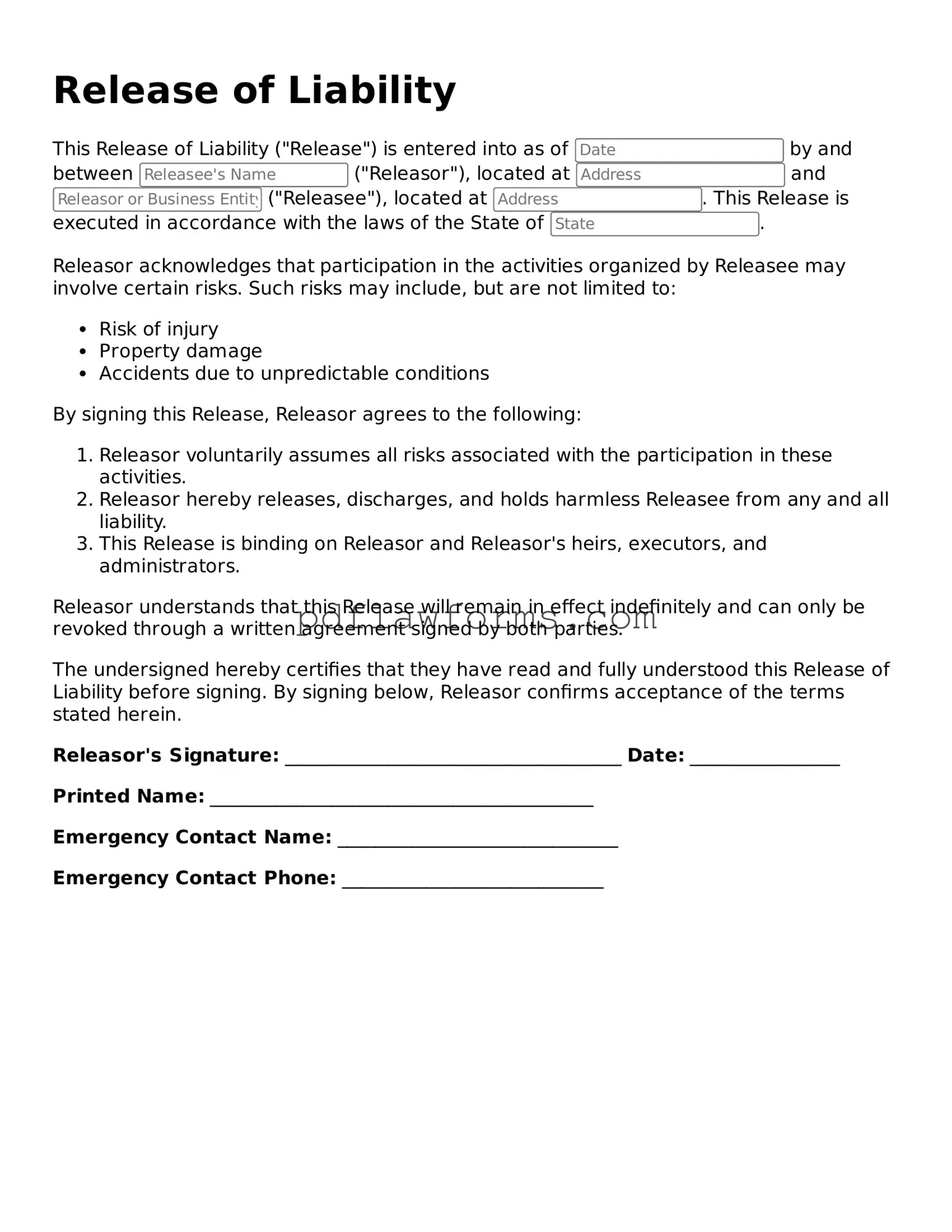Filling out a Release of Liability form is a crucial step in protecting oneself from potential legal claims. However, many individuals make common mistakes that can undermine the effectiveness of the document. Understanding these pitfalls can help ensure that the form serves its intended purpose.
One frequent mistake is failing to read the entire document before signing. Many people skim through the form, missing important clauses or stipulations. This oversight can lead to misunderstandings about the rights being waived. It is essential to take the time to understand every section of the form to avoid unintended consequences.
Another common error involves not providing accurate information. Whether it’s personal details or the specifics of the activity, inaccuracies can render the form invalid. Double-checking all entries for correctness is vital. A small mistake can lead to significant complications down the line.
People often overlook the importance of including all relevant parties in the release. If a participant fails to name all individuals or organizations that could potentially be liable, the release may not hold up in court. It’s important to ensure that all parties involved are clearly identified to prevent any loopholes.
Additionally, some individuals mistakenly assume that a Release of Liability eliminates all responsibility. While the form does provide protection against certain claims, it does not absolve parties from gross negligence or intentional misconduct. Understanding the limitations of the release is crucial for managing expectations.
Lastly, not consulting a legal professional can be a significant oversight. While the form may seem straightforward, legal nuances can arise that affect its validity. Seeking advice from someone knowledgeable can provide clarity and ensure that the release is properly executed.
